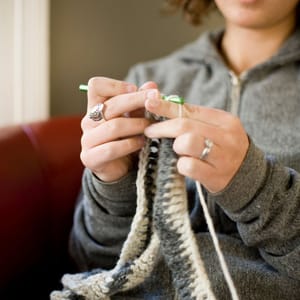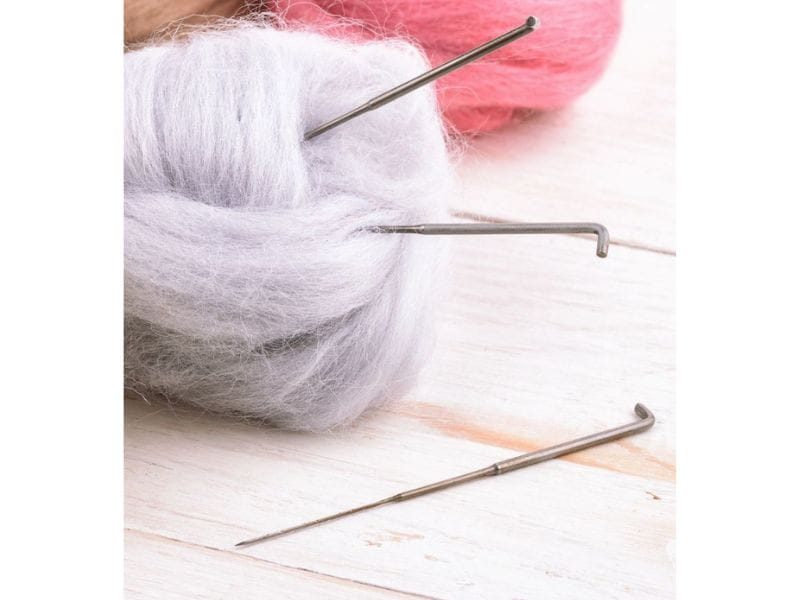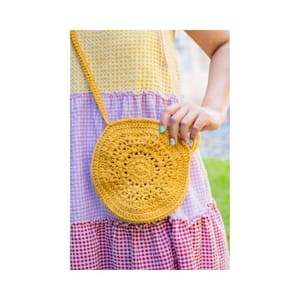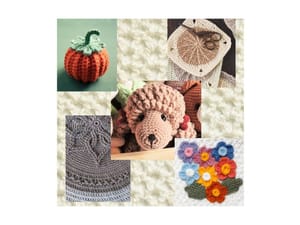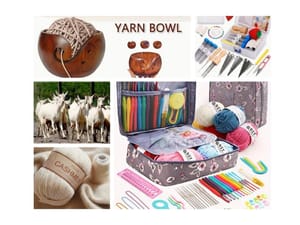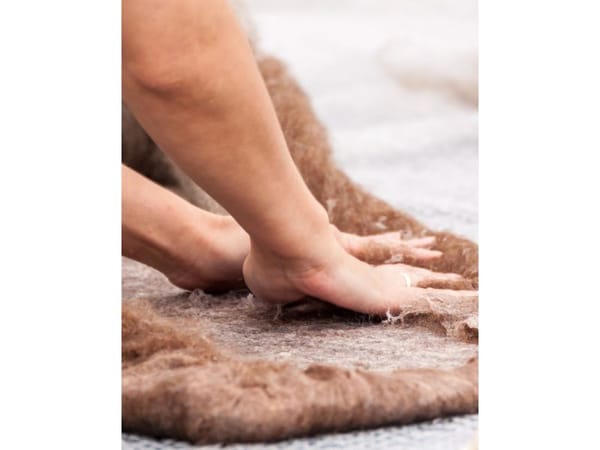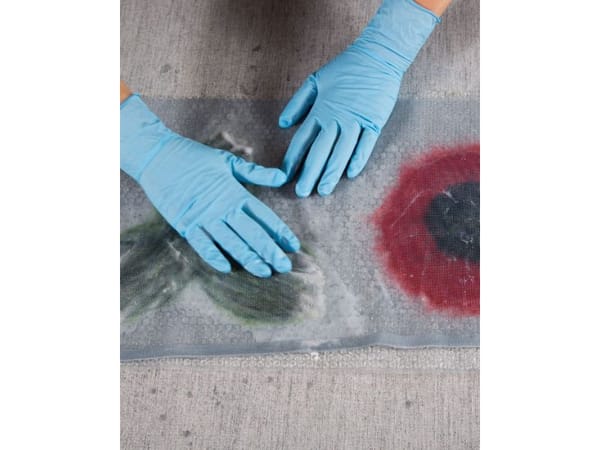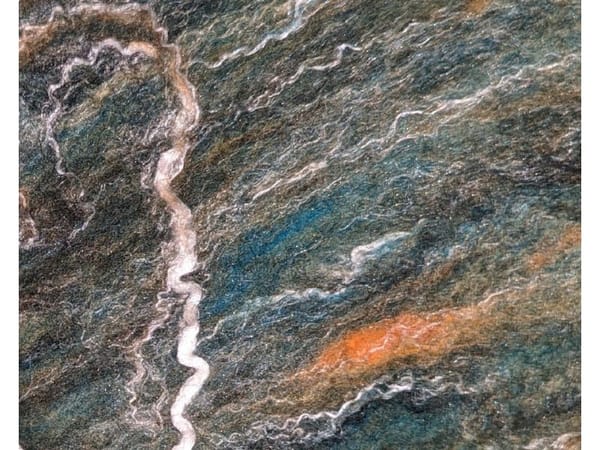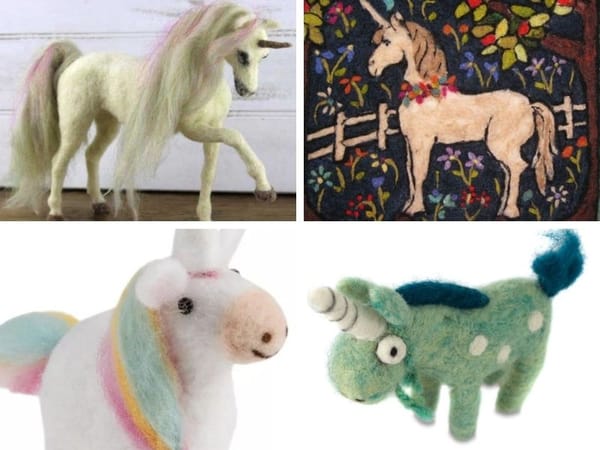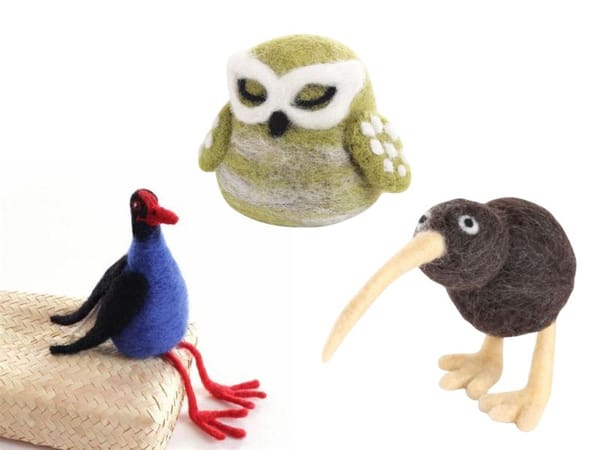Felting is a craft beloved by many for its ability to transform fluffy wool into intricate, dense creations.
Whether you're a seasoned needle felter or just starting out (or wanting to start needle felting), understanding the tools of the trade is crucial.
One common question that arises is: do felting needles wear out?
This article dives deep into the lifespan of felting needles, offering insights and tips to maximize your felting success.
Key Takeaways:
- So, do felting needles wear out? They do wear out over time due to the mechanical stress and material resistance they encounter.
- The lifespan of a needle can vary based on the material used, the felting technique, and how the needle is handled.
- Proper usage and storage are key to extending the life of felting needles.
Felting needles are not just another sewing tool; they are specialized instruments designed to entangle fibers into felt.
They come in various shapes and sizes, each suited for different types of wool and felting techniques. But like all tools, they have a lifespan, which can be influenced by several factors.

Understanding Felting Needles
Felting needles are unique; they have barbs along the shaft that tangle the wool fibers as they are poked into the felting pad.
The most common types include triangular needles, which are versatile and suitable for most projects, and the reverse felting needle, which pull fibers out instead of pushing them in, creating a fluffy surface.

Factors Affecting Felting Needles Wear and Longevity
The durability of felting needles is influenced by the type of wool used.
Coarse wool, like sheep's wool, tends to wear out needles faster than finer wools like merino.
The hardness of the felting surface also plays a significant role. Needle felting on a sturdy felting pad provides a solid base that can reduce felting needle breakage.

Proper Technique to Reduce Felting Needles Wear
Using the correct technique is crucial in extending the life of your felting needles.
Needling at the same angle with short quick stabs and avoiding bending or twisting the needle can prevent it from breaking.
It’s also important to add wool gradually, allowing the felting needle to work through the layers effectively.

Choosing the Right Felting Needle
Selecting the right felting needle for your project can make a big difference.
Finer gauge needles are perfect for detailed work on finer wools, while thicker, more robust needles can handle coarse wool better.
Multi needle holders can also be useful for working on larger areas more efficiently, though they might put more strain on each individual felting needle.

Exploring Needle Felting Kits for Beginners
If you're just dipping your toes into the vibrant pool of needle felting, starting with a comprehensive needle felting kit can be your best bet.
These kits typically come packed with all the essentials such as a variety of needles, fine wool, and felting cushions, making it easier for beginners to jump right in without feeling overwhelmed by choices.
They often include detailed instructions, which act as a guiding light, helping you navigate through your first project with more confidence and less frustration.
Moreover, the inclusion of different sizes and types of needles, like the reverse felting needle, allows new crafters to experiment with various techniques and textures right from the start.
This variety not only enriches the learning experience but also broadens the creative horizon early on.
Needle felting kits are a gateway to mastering the craft, providing a solid foundation on which beginners can build their skills bit by bit, or should we say, stab by stab.

The Role of Core Wool in Shaping and Structuring Projects
Core wool is the unsung hero of the felting world, especially when it comes to building volume and shape in your needle felt projects.
This type of fiber is generally more robust and less expensive, making it ideal for creating the base shape of your project.
By using core wool, you can save your finer, more colorful wools for the outer layers, where detail and texture are more visible. This not only makes the needle felt project more cost-effective but also ensures that the finer wools can do what they do best: dazzle with their texture and color.
Additionally, core wool is easier to shape and stab into form, which can be particularly encouraging for beginners who are still mastering the art of needle felting.
Its forgiving nature allows for corrections and adjustments without too much hassle, reducing the risk of breaking needles or snapping the fiber.
Whether you're crafting a plump little animal or a floral arrangement, starting with a core wool base can make your felting project more manageable and enjoyable.

Maintenance and Storage
Taking care of your felting needles is essential.
Always store them securely, like in their original container, a cushioned needle holder, or a foam pad, to prevent them from bending or snapping.
Cleaning the needles regularly to remove wool residue can also help maintain their sharpness and effectiveness.
When to Replace Your Needles
Knowing when to replace your needles is key to ensuring the quality of your needle felt projects.
If you notice that your needle is bending, dull, or not entangling the fibers as efficiently, it might be time for a new one.
Keeping a few spare needles on hand can help you maintain the momentum of your project without interruption.
The Impact of Needle Quality
Investing in high-quality needles can also extend the lifespan of your tools.
Higher quality needles are typically made from better materials that can withstand the repetitive action of felting without degrading quickly.
Common Mistakes to Avoid
Beginners often make the mistake of using too much force or the wrong type of needle for their wool. This can lead to increased wear and tear on the needles.
Paying attention to the needle's response to the wool and adjusting your technique accordingly can help mitigate this issue.
Wrapping Up
Next time you're asked, "Do felting needles wear out?", you can confidentially answer the felting needles, integral to the needle felting process, do indeed wear out, but their lifespan can be significantly extended through proper use, technique, and care.
By understanding the factors that affect needle durability, choosing the right needle, and maintaining it properly, you can ensure that your felting projects continue to flourish without frequent needle replacements.
Note:- I learned this the hard way. My improper needle felting poking technique has broken many a needle! Sometimes I would break needles right as I would start needle felting! The fine sharp tip to remain lost within the body of the needle felt project. Fish them out using tweezers. Sometimes just the very fine (but sharp) tip will break off. Try to fish it out with tweezers, but if digging into your needle felt project will ruin it, then leave it in there - just make sure your needle felt is nicely dense. I learned to buy more needles than I need for a needle felt project.

Q1: How often should I replace my felting needles?
A1: The frequency of replacement depends on how often you felt, the type of wool you use, and your felting technique. Generally, if you notice a decrease in performance or visible damage, it's time to replace the needle.
Note:- Sometimes you can hear it. If the needle felting poking sound changes and becomes rougher, it may be time to change your needle.
Q2: Can I sharpen my felting needles?
A2: Unlike sewing needles, felting needles cannot be sharpened because of the tiny barbs along their shaft. Once these barbs wear down, the needle must be replaced.
Q3: Are there any signs that my felting needle is wearing out?
A3: Yes, signs include difficulty in penetrating the wool, more fibers getting stuck, or visible bends or blunts in the needle. If felting becomes more laborious or less effective, consider checking your needle for wear.


Images Source: Canva, Michaels, and Maid-in-China

